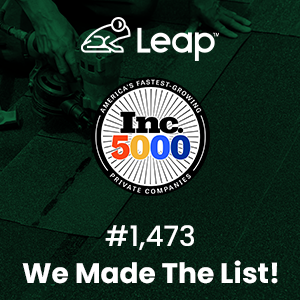Home improvement projects are intricate endeavors that require a coordinated effort from various skilled professionals. In this context, subcontractors play a pivotal role in delivering high-quality outcomes. Effective subcontractor management is essential to ensure that projects are executed smoothly, on time, and within the budget.
In today’s digital age, the integration of management software can revolutionize how subcontractors access project details and communicate. Overall, this leads to improved collaboration and streamlined processes.

Understanding Subcontractor Management
Before delving into the benefits of management software, it’s crucial to establish a strong foundation in subcontractor management. This involves identifying the various roles and responsibilities of subcontractors, setting clear expectations, and establishing lines of communication. A well-structured management strategy lays the groundwork for successful project execution.
Subcontractors can play a pivotal role in the preconstruction and construction of the work. In fact, their assistance will go a long way in determining the outcomes of each project. And without good collaboration, communications can fall apart, and project delays become more likely.
- Build relationships with subcontractors in your area
- Communicate expectations and needs clearly
- Ensure job site safety at all times
- Find mutually beneficial solutions when challenges arise
- Submit documentation in a timely manner
Your relationships with subcontractors will affect your ability to provide quality work on time. However, new technology is making it easier to streamline your communications and centralize your project information. In addition, you can easily give subcontractors access to this data to ensure they have a complete scope of each project.
Below, let’s discuss the 10 best tips for using software as a tool for subcontractor management. It’s the most efficient solution that will give you the best results time and time again.
1. Management Software Integration
Integrating software into your workflow with subcontractors offers a range of benefits. It enhances transparency, facilitates efficient communication, and simplifies administrative tasks.
With the right software in place, subcontractors can access project details, collaborate in real-time, and provide updates seamlessly. This integration not only saves time, but also minimizes the risk of miscommunication and errors.
2. Selecting the Right Software
The market is flooded with management software options. And each comes with its own unique features. When selecting software for subcontractor management, it’s crucial to opt for a platform that aligns with your project’s needs.
Look for software that offers comprehensive tools for project tracking, document sharing, and communication. Moreover, some platforms such as Leap, offer specific features that allow you to give subcontractors user access to specific projects. That way, the subcontractors will only see the information for the projects they’re working on and nothing else.
Scalability and user-friendliness should also be prioritized to ensure all subcontractors can easily adapt to the new system. You don’t want to invest in software that further complicates things.
3. Onboarding Subcontractors
Introducing subcontractors to the new software is a crucial step in the integration process. Provide straightforward training to ensure subcontractors understand how to navigate the platform, access project details, and communicate effectively.
Clear guidelines on using the software for tasks like submitting progress updates, sharing documents, and addressing concerns should be established. This shouldn’t take up a lot of time and it’s crucial to make sure everyone is on the same page.
4. Real-Time Project Tracking
One of the most significant advantages of management software is the ability to track project progress in real-time. Subcontractors can input updates directly into the system. This allows you to monitor milestones, identify potential delays, and make informed decisions promptly.
This level of transparency fosters accountability and empowers subcontractors to take ownership of their tasks. In general, real-time project tracking not only establishes accountability, but protects both your business and your customers.
5. Centralized Communication Hub
Effective communication is the cornerstone of successful subcontractor management. The integration of software provides a centralized hub where all project-related discussions, updates, and queries can take place.
This minimizes the reliance on scattered email chains and ensures that critical information is easily accessible to everyone involved. As a result, decisions can be made more efficiently, and the risk of miscommunication is significantly reduced.
6. Document Sharing and Collaboration
Traditional document sharing methods can lead to version control issues and confusion among subcontractors. Management software streamlines this process by providing a secure platform for document storage and collaboration.
Subcontractors can upload necessary files, access project details, and share progress reports in a controlled environment. This not only enhances organization, but also facilitates a seamless flow of information.
7. Realizing Cost and Time Efficiency
Efficient subcontractor management translates to cost and time savings. With software integration, administrative tasks like scheduling, invoicing, and payment tracking can be automated.
This reduces the likelihood of errors and delays. Additionally, improved collaboration and communication lead to quicker issue resolution. Now you’re minimizing downtime and ensuring projects stay on track. It’s also important to know your labor costs for subcontractors, which can vary from state to state.
8. Addressing Challenges and Concerns
While management software offers numerous benefits, it’s essential to address any challenges or concerns that may arise during implementation. Some subcontractors might face a learning curve when adapting to the new system.
To mitigate this, offer ongoing support and resources. Regular feedback from subcontractors can help identify any issues and allow for timely adjustments to your strategy.
9. Continuous Improvement and Adaptation
Subcontractor management is not a static process; it requires continuous improvement and adaptation. Regularly assess the effectiveness of the software integration and gather feedback from all stakeholders.
Use this feedback to refine processes, update training materials, and enhance the software’s features based on real-world usage. In fact, many businesses aren’t using their preferred software to its fullest capabilities. As a result, contractors often face inefficiencies that lead to common errors and delays.
10. Data Security and Privacy Measures
As software involves the sharing and storage of sensitive project information, prioritizing data security and privacy is paramount. Choose software that implements robust encryption protocols and access controls.
Regularly update passwords and permissions to ensure that only authorized personnel can access critical data. Conduct routine audits to identify and address any potential vulnerabilities. This safeguards both your project and your subcontractors’ information.
Manage Your Subcontractors with Leap
The Leap platform is one of the only industry-specific software solutions with subcontractor management features. Within Leap, you can create accounts for your subcontractors to access specific project details.
Furthermore, you can manage and minimize their permissions. This will prevent any confusion when a subcontractor logs into the software. It also protects your data and eliminates the potential for communication errors.
Subcontractors can log into the Leap platform and have all the project information right at their fingertips, from customer communications to materials and timeline. Every step of the job can be managed directly within Leap. It’s a complete solution that gives you end-to-end management of every project.
Leap can do it all: sales, lead management, production, customer service, and more. You can create a seamless workflow, automate repeatable line items, and reduce irrelevant or unnecessary tasks that are slowing down your business.
Effective subcontractor management can go a long way in the growth of your business and the experience you provide for your customers. And the integration of management software elevates this process by providing a platform for communication, collaboration, and project tracking.
You can enhance project outcomes, minimize delays, and foster a culture of transparency and accountability with your subcontractors. It’s not just an upgrade—it’s a strategic investment in the future of your home improvement projects. To learn how Leap can help you better manage your subcontractor relationships, fill out the form below. You can schedule a customized and unique demo with our experts to gain a true understanding of the power of the Leap platform.
"*" indicates required fields




